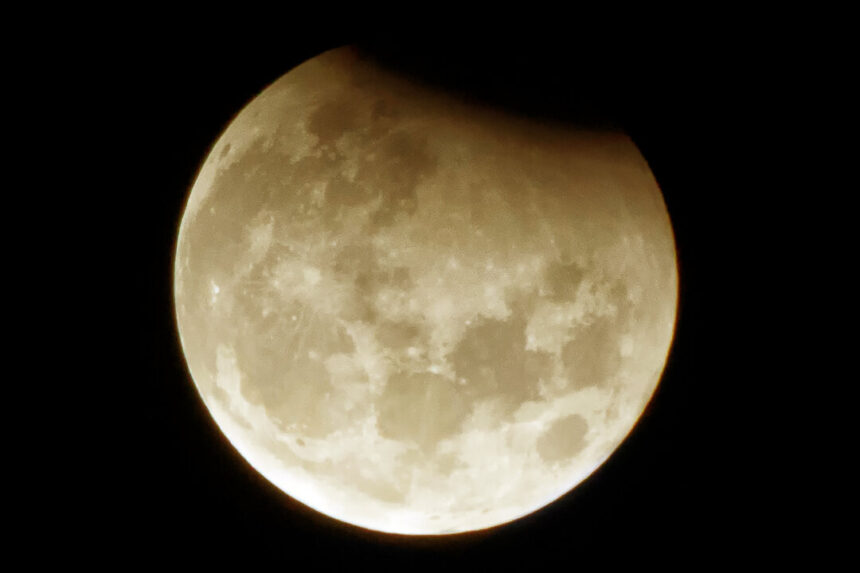Canadians across the country will have the opportunity to witness a partial eclipse of the Harvest Supermoon on Sept. 17.
A lunar eclipse occurs when Earth is positioned between the moon and the sun, casting a shadow on the moon. The moon may appear red for several hours due to this alignment, as noted by NASA source.
“An imperfect alignment of Sun, Earth, and Moon leads to the Moon passing through only part of Earth’s umbra,” NASA stated on its website. “The shadow expands and then retreats without completely enveloping the Moon.”
This week’s full moon is known as a Harvest Moon because it is closest to the autumnal equinox. The moon is also classified as a supermoon, a term used for a new or full moon when it is near its nearest orbital point to Earth. Full supermoons are the largest and brightest moons of the year, according to NASA, often appearing around 30 percent brighter than usual.
How to View
A full moon will be visible from approximately 10:30 p.m. Eastern Daylight Time (ET) on Sept. 17 and will appear full for three consecutive nights, as stated by NASA.
The partial eclipse is set to commence around 8:41 p.m. ET on Sept. 17, although it may be challenging to observe. By around 10:13 p.m., the top edge of the moon will begin to enter the full shadow, with the eclipse reaching its peak around 10:44 p.m. At this time, the top eight percent of the moon will be in “full shadow,” according to NASA.
The moon will emerge from the full shadow around 11:16 p.m. and exit the partial shadow on Sept. 18 at 12:47 a.m.
The partial eclipse will be visible to those in areas with clear skies. Using binoculars or a telescope can enhance the observation of this phenomenon.
Individuals can observe the partial lunar eclipse without eye protection, as advised by the Canadian Space Agency (CSA). Photographs of the event can also be taken using cell phones or digital cameras.
Tonight’s supermoon marks the second of four consecutive supermoons this year. Another supermoon is anticipated in October, which will be the closest approach of the moon to Earth. The final supermoon will occur in November.
The next opportunity for Canadians to witness a full lunar eclipse is on March 13, 2025, or March 2, 2026.
The Associated Press contributed to this report.







